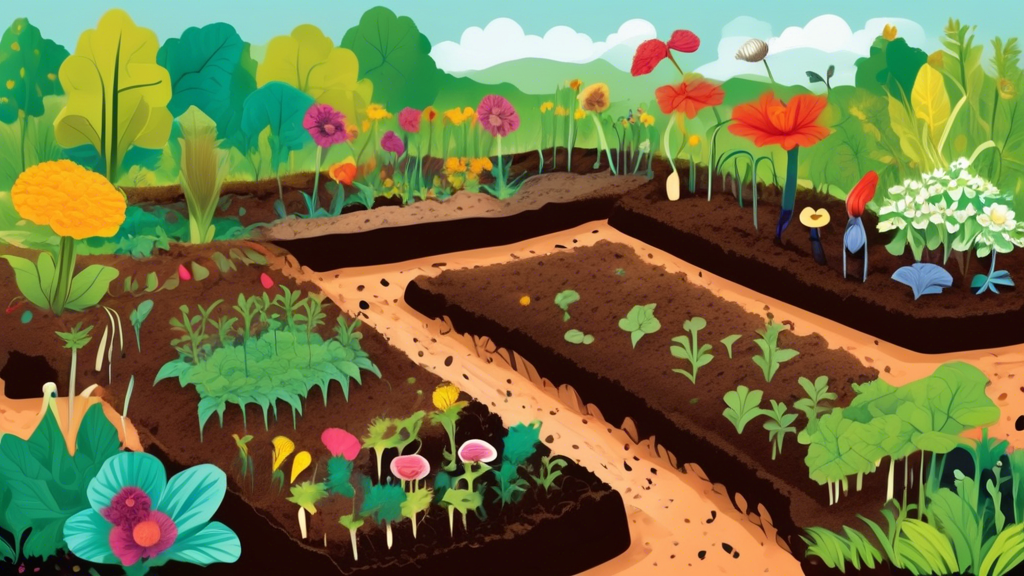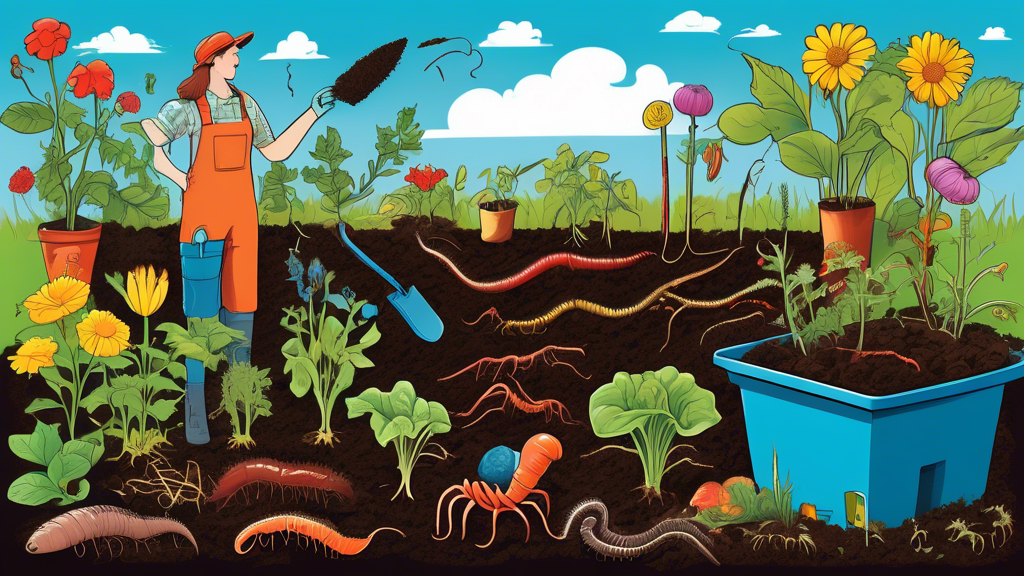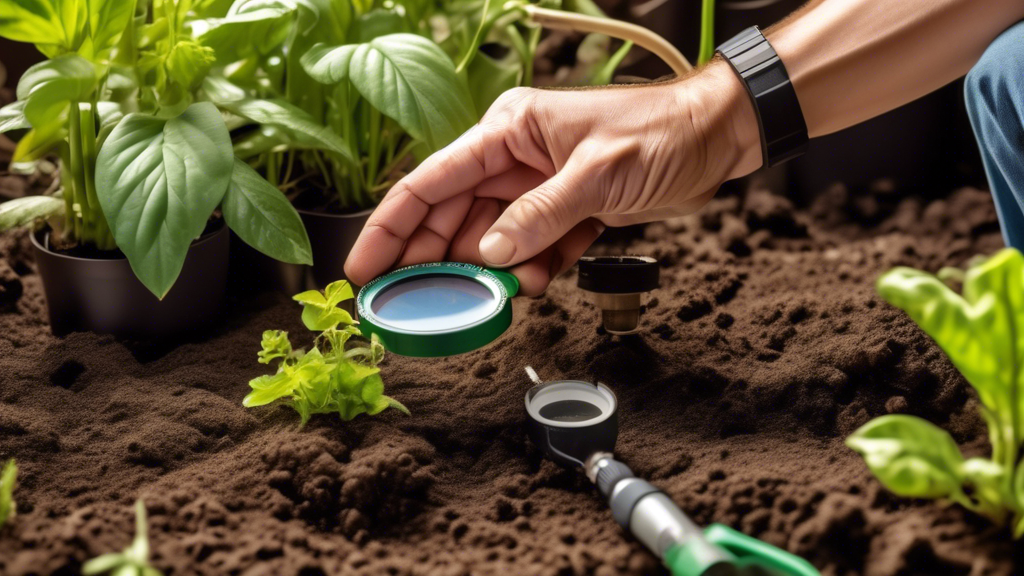
Why Your Garden Needs a Seasonal Strategy
The Challenges of a One-Size-Fits-All Garden
Many gardeners struggle with recurring issues that could be solved with a seasonal approach. Planting the same combinations year-round leads to predictable pest infestations as insects establish permanent residences in your garden. Soil becomes exhausted when heavy-feeding plants like tomatoes and corn repeatedly draw the same nutrients without replenishment. Furthermore, gardens experience boom-and-bust cycles for pollinators when flowering plants aren’t staggered throughout the seasons, resulting in poor fruit set. Perhaps the biggest waste is leaving garden beds empty for months, missing out on potential harvests.
The Core Benefits of Seasonal Companion Planting
By adapting your plant partnerships to the time of year, you create a resilient ecosystem that naturally repels pests, improves soil health through nitrogen fixation and organic matter addition, and ensures a consistent presence of pollinators. This method also maximizes every square inch of your garden space, potentially doubling or tripling your annual harvest from the same area.
Spring Companion Planting Pairings
Early Spring (Cool-Season Starters)
As the ground thaws, focus on cold-hardy combinations that work together to build soil structure and provide early harvests.
| Plant Combination | Benefits | Planting Notes |
|---|---|---|
| Peas + Lettuce + Radishes | Peas fix nitrogen for the leafy greens; radishes break up soil and mature quickly | Plant in succession 2-3 weeks apart for continuous harvest |
| Broccoli + Chamomile + Beets | Chamomile improves broccoli flavor; beets make efficient use of space between plants | Harvest chamomile flowers to encourage more blooms |
Little-Known Tip: Plant radishes near your future squash locations in spring. They’ll mature and be harvested before squash vines spread, and their strong scent can help deter squash vine borers later in the season.
Late Spring (The Warm-Season Transition)
As temperatures warm, transition to traditional summer crops while maintaining protective partnerships.
| Plant Combination | Benefits | Planting Notes |
|---|---|---|
| Corn + Beans + Squash (Three Sisters) | Corn supports beans; beans fix nitrogen; squash shades soil and suppresses weeds | Plant in hills after last frost date |
| Tomatoes + Basil + Marigolds | Basil may improve tomato flavor; marigolds deter nematodes and other pests | Choose compact marigold varieties to avoid shading tomatoes |
Summer Companion Planting Pairings
Thriving in the Heat
Summer partnerships focus on pest management and maximizing production during peak growing season.
| Plant Combination | Benefits | Planting Notes |
|---|---|---|
| Cucumbers + Nasturtiums + Dill | Nasturtiums lure aphids away; dill attracts beneficial insects that prey on pests | Allow some dill to flower for maximum beneficial insect attraction |
| Carrots + Onions + Rosemary | Onion scent confuses carrot fly; rosemary deters carrot rust fly | Interplant in rows or alternate patches |
| Peppers + Okra + Basil | Okra provides light shade; basil deters thrips and improves pepper growth | Works especially well in hot climates |
Succession Planting for Continuous Harvest
Replace harvested spring crops with warm-season companions to keep your garden productive:
- After harvesting spring peas, plant bush beans in the same space – the beans will benefit from the nitrogen fixed by the peas
- Once garlic is harvested in early summer, plant a fast-maturing crop like bush beans or late carrots
- Replace harvested lettuce with heat-loving peppers or eggplants
Fall Companion Planting Pairings
Extending the Harvest into Cooler Weather
Fall combinations focus on cold tolerance and pest protection for the remaining growing season.
| Plant Combination | Benefits | Planting Notes |
|---|---|---|
| Kale + Beets + Cilantro | Cilantro attracts beneficial insects; beets and kale have complementary growth habits | Plant in late summer for fall harvest |
| Spinach + Garlic + Chives | Garlic and chives deter pests; spinach provides quick ground cover | Plant garlic around spinach patch perimeter for winter growth |
| Lettuce + Chives + Radishes | Chives deter aphids; radishes mark rows and mature quickly | Use cold-tolerant lettuce varieties like Winter Density |
Preparing the Soil for Spring
Some fall plantings aren’t for immediate harvest but for future garden health:
| Cover Crop Combination | Benefits | Planting Timing |
|---|---|---|
| Clover + Winter Rye | Clover fixes nitrogen; winter rye prevents erosion and adds organic matter | Plant 4-6 weeks before first frost |
| Fava Beans + Oats | Fava beans are heavy nitrogen fixers; oats provide winter ground cover | Best for milder winter regions |
Winter Companion Planting & Preparation
Overwintering and Protecting Your Soil
Even in cold climates, strategic winter plantings can protect and improve your garden:
| Plant Combination | Benefits | Winter Care |
|---|---|---|
| Overwintering Onions + Straw Mulch | Early spring harvest; straw protects soil and onions from freezing | Apply thick mulch after ground freezes |
| Garlic + Strawberry Spinach | Garlic deters pests; spinach provides living mulch | Plant garlic in fall for summer harvest |
The “Living Mulch” Secret for Mild Winters
In regions with mild winters, allow low-growing perennial herbs like thyme, oregano, or chamomile to spread between dormant plants. These create a living mulch that suppresses winter weeds, prevents soil erosion, and provides minimal shelter for beneficial insects. The herbs remain evergreen in many climates, offering fresh harvests throughout winter.
Companion Planting Combinations to Avoid
Common Antagonistic Plant Relationships
| Plants to Keep Separate | Reason for Incompatibility | Better Alternatives |
|---|---|---|
| Beans + Onions/Garlic | Alliums release compounds that can inhibit bean growth | Plant beans with carrots or cucumbers instead |
| Potatoes + Tomatoes | Same family; attract identical pests and diseases | Separate by different garden sections |
| Brassicas + Strawberries | Can stunt each other’s growth through root interactions | Plant brassicas with aromatic herbs instead |
| Dill + Carrots | Can cross-pollinate, affecting seed quality and flavor | Separate if saving seeds; otherwise generally compatible |
Frequently Asked Questions
Can I practice seasonal companion planting in a small space or containers?
Absolutely! The principles scale beautifully to small gardens and containers. A large container can host a “mini-guild” like a tomato, basil, and marigold combination. Use vertical space by training pole beans up corn stalks in containers, and focus on sequential planting – replacing harvested plants with seasonally appropriate companions.
How important is crop rotation within seasonal companion planting?
Extremely important. Even with excellent companion combinations, you should practice crop rotation by avoiding planting the same vegetable family in the same location for 2-3 years. This prevents buildup of soil-borne diseases and nutrient depletion. Think of companion planting and crop rotation as complementary strategies for garden health.
What if I make a mistake with my pairings?
Don’t worry – gardening is an ongoing experiment! Most companion planting mistakes result in slightly reduced growth rather than complete failure. Observe what works in your specific microclimate and adjust each season. Even experienced gardeners continually refine their pairings based on observation.
Where can I find a reliable seasonal companion planting chart for my specific region?
Your local university cooperative extension service is the best resource for region-specific planting calendars and companion planting advice tailored to your local pests, diseases, and climate conditions. Many offer free publications and online resources specifically for your growing region.
Are there scientific studies supporting companion planting benefits?
While some companion planting traditions are based on observation rather than rigorous science, increasing research supports many benefits. Studies have confirmed that marigolds release compounds that deter nematodes, aromatic herbs can mask crop scents from pests, and flowering companions increase beneficial insect populations. The strongest scientific support exists for trap cropping (using sacrificial plants), habitat manipulation for beneficial insects, and nitrogen fixation through legume partnerships.






